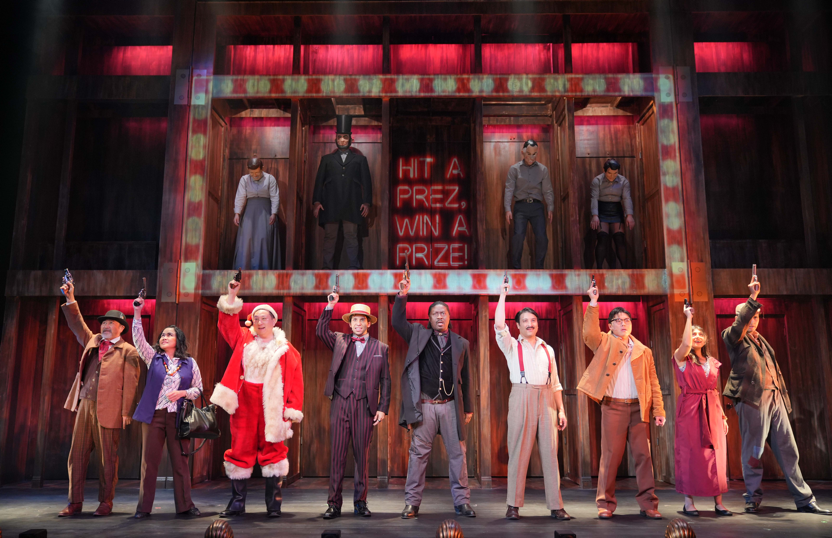
One of the most daring politically themed plays disappoints in repeating CIA disinformation while distorting history
Stephen Sondheim’s Assassins is arguably one of the most daring political-themed plays to have stormed Broadway’s barricades since those 1930s’ proletarian classics Waiting for Lefty and The Cradle Will Rock and the 1965 production of Peter Weiss’s Marat/Sade. Assassins’ music and lyrics are by the legendary Sondheim and the book is by John Weidman, based on a concept by Charles Gilbert, Jr.
Unfortunately, the Tony award winning play which originally premiered off-Broadway in 1990, and has been most recently revived for a February 17-March 20, 2022, run at East West Players in Los Angeles’s Little Tokyo district, falls into the trap of accepting the lone-assassin theory of the JFK assassination and a number of others.
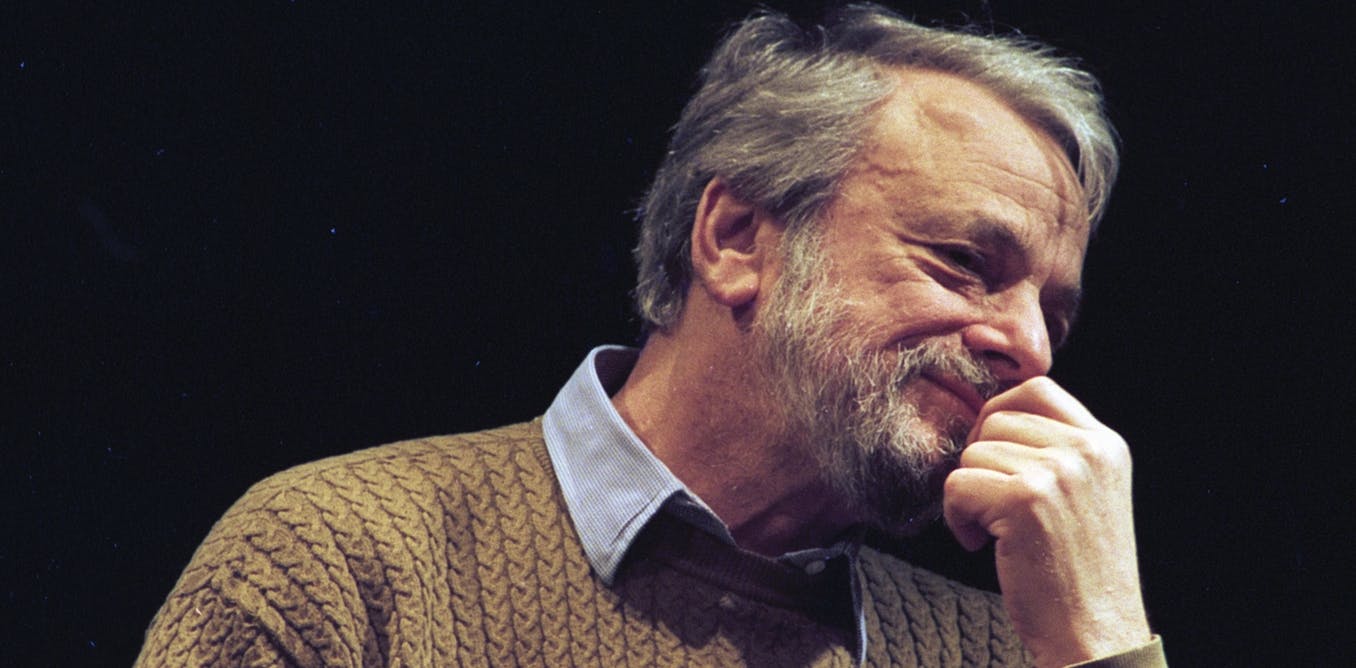
When Lee Harvey Oswald (played by Adam Kaokept) appears onstage in Assassins, he is in the Texas School Book Depository Building brooding over his troubled marriage to Marina, whom he had wed while he was living as a “defector” in the Soviet Union.
Dejected, Oswald contemplates suicide—until Lincoln’s liquidator shows up, egging him on to solve his problems by whacking President John F. Kennedy. By doing the dirty deed, John Wilkes Booth (Trace Thompson) assures Oswald his life will have attained everlasting meaning and fame.
Obviously, John Wilkes Booth, who died a century before Lee Harvey Oswald, never met him, and this is a theatrical device. But it is one to drive home the play’s point that all of the title characters are driven to assassinate presidents by psychological trauma, delusions of grandeur and quest for eternal fame.
Oswald is presented as the archetypal lone gunman, a deranged loser from Losersville, who acted alone.
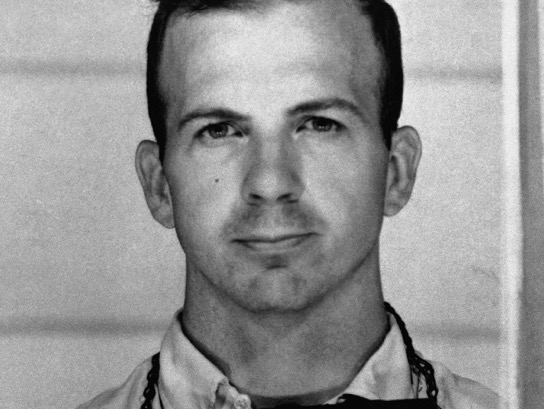
Lee Harvey Oswald [Source: biography.com] 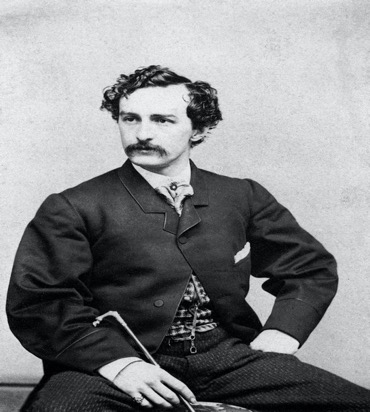
John Wilkes Booth [Source: yahoo.com]
Sondheim’s depiction runs counter to Oliver Stone’s 1991 masterpiece JFK, which made a compelling case that Kennedy’s elimination was executed by a politically motivated cabal with multiple shooters—not by a lone assassin who has some unresolved psychological issues.
In an exclusive interview with the author, Stone stated: “As to your question of Oswald committing suicide, I have no evidence of that, seen nothing of that sort, and doubt it. I haven’t seen Assassins, but it sounds like it’s the unhappy loner, communist dupe—the usual shallow reasons we hear over and over. I’m surprised that Sondheim was taken in by this, but then again, I’m not.”
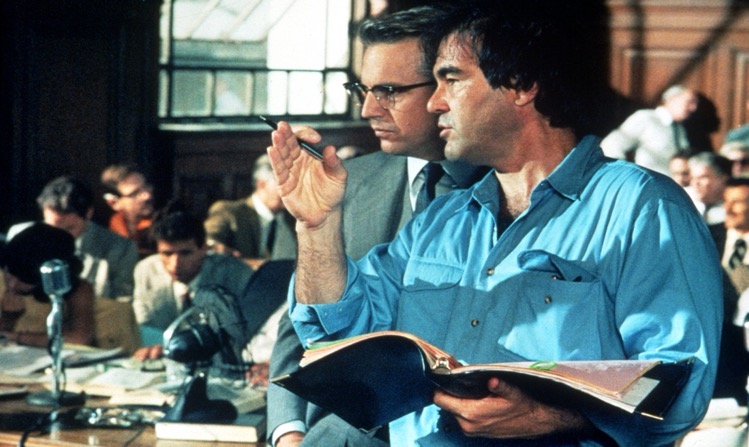
Last November, before his new documentary JFK Revisited: Through the Looking Glass debuted on Showtime on the anniversary of Kennedy’s murder, Stone in another interview with me had this to say about Oswald:
“Oswald has the fingerprints of intelligence all over him for years. They’ve been reading his mother’s mail for three, four years. He’s an agent—or he’s some kind of contact with the CIA. And he’s protected—he’s protected. Because he comes back from Russia, nobody talks to him, nobody debriefs him. But he’s sent on various assignments, in New Orleans, Fort Worth and Dallas until he can be used…
“Speculation, but I definitely don’t believe he was on the sixth floor [of the Texas School Book Depository Building]. I believe he was working with contacts in the [Central Intelligence] Agency. He had contacts-he was an informant for the FBI, too. He knew [Jack] Ruby, who killed him.
“He knew he had been set up. I think that he knew he was in trouble. When you see the man in the corridor [presumably in the Dallas police station] you see a completely cool operator who knows how to behave in these situations. He wasn’t the so-called crazed, lone nut assassin who screams, ‘I got him! I got him! I did it for my country!’ All that shit—no. He was saying,
‘I need a lawyer.’ He wanted a lawyer, which is one thing, and he said, ‘I don’t know anything about this.’ Which is true—he didn’t know anything about the actual killing.
“He really was a man, I think, who was cool under pressure. He talked with the authorities at the police station after several hours over Friday, Saturday, before he was moved on Sunday. But no records were kept of what he said.”
I remarked that it was “strange” that nobody bothered to document what the man who allegedly just shot the president said during that period of time and Stone replied: “Well, everything is very disturbing.”
Indeed. So, if Oswald didn’t shoot JFK, who the hell did?

I asked the film director what the role of former CIA Director Allen Dulles in the Kennedy liquidation and cover-up was, to which Stone answered:
“Plays a huge role that we can never—we’ll never find a smoking gun that links him. But he was all over the case. After he got fired by Kennedy in ’61 he was bitter, he said so later to [writer] Willie Morris about his feelings about Kennedy who [he said] “thought himself a god.”
“He was fired with two of his people. But Kennedy never cleaned house, which was huge. He should have gotten rid of everyone.
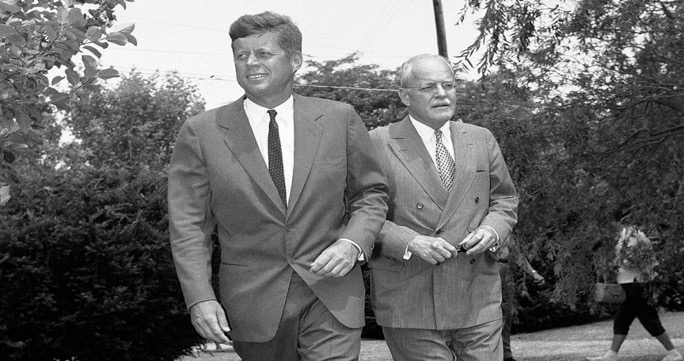
“Because [Richard] Helms basically took over the Agency—he was the assistant to [CIA Director of Intelligence John] McCone. McCone was an outsider—Helms ran the place and Helms knows a lot. So, we should have the files on Helms, as much as possible. He was working with [CIA officer] William Harvey—he brought Harvey [who was heavily implicated in Operation Mongoose’s campaign to exterminate Castro] back to work with the Cuban community.
“And we know also now from the film that Lyndon Johnson was against the withdrawal plan from Vietnam, you see. We have a phone conversation with him and [Secretary of Defense Robert Strange] McNamara, and he says to McNamara, ‘You know, I was against you and the president.’ He was very cocky at this point—but when he was vice president he would shut up. So, you know that Lyndon Johnson totally opposed withdrawal from Vietnam, which Kennedy definitely wanted. McNamara made it very clear in his book that Kennedy was going to withdraw from Vietnam, win or lose. The same thing was said by [National Security Adviser] McGeorge Bundy.
“…when [JFK] was killed… the whole era of hopefully progressive policies on the part of the American administration was changed. We went back to the old hardcore Eisenhower-Dulles way of dealing with foreign countries… Dulles and Richard Helms… were the bigger fish.”
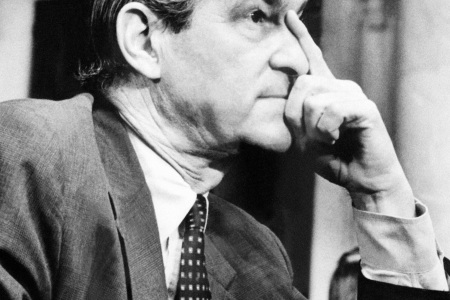
Real Life Assassins Whom Assassins Leaves Out
The reason why Sondheim’s musical is so intrepid is that, within a loose revue format, Assassins is about many of the men and women (whom we know of!) who successfully or unsuccessfully attempted to kill a sitting U.S. president. However, just like in its depiction of the JFK assassination and Oswald, the play leaves many important things out that point to larger conspiracies and hence misses an opportunity to educate viewers about the violent and corrupt nature of the American political system.
RICHARD LAWRENCE: The Assassin and Presidential Primal Scream
The über-assassin esteemed by the other members of the kooky club of ludicrous liquidators and deadly misfits is the granddaddy and ringleader of them all, John Wilkes Booth, who shot President Lincoln. But before that Southern sympathizer did his dirty deed, house painter Richard Lawrence attempted to shoot President Andrew Jackson outside the Capitol Building on January 30, 1835.
After his pistols misfired, Jackson beat Lawrence with a cane and the would-be killer was detained by a crowd including Congressman Davy Crockett, TV’s “king of the wild frontier.”
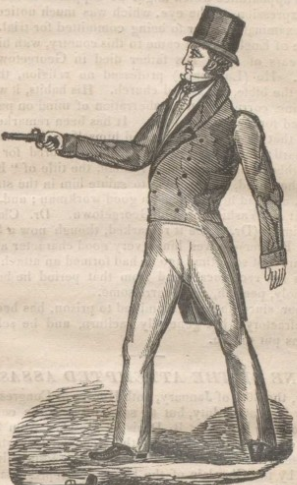
Richard Lawrence [Source: wikipedia.org] 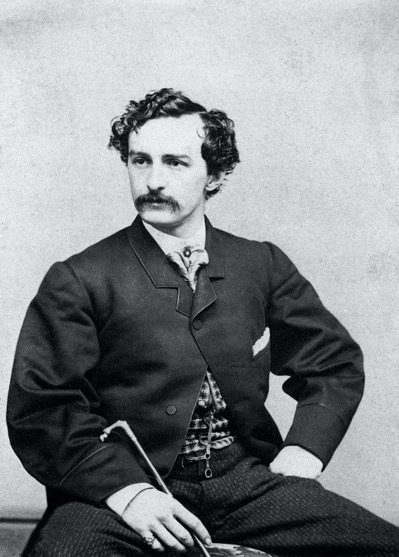
John Wilkes Booth [Source: yahoo.com]
Francis Scott Key, composer of the national anthem, was the prosecuting attorney at Lawrence’s trial and, after only five minutes of deliberation, the jury found Lawrence not guilty by reason of insanity. Lawrence spent the rest of his life in institutions for the mentally ill, but Old Hickory reportedly suspected that he was not a lone gunman acting on his own, but part of a larger conspiracy.
“King Richard,” as the English-born Lawrence fancied himself to be, believed Jackson’s opposition to a Second Bank of the United States prevented him from receiving a large sum of money he believed the government owed him.
Jackson’s former vice president and political opponent, John C. Calhoun, insisted upon his own innocence in a speech on the Senate floor. The 7th president also suspected Mississippi Senator George Poindexter, who had employed Lawrence to do house painting a few months before the attempted assassination and likewise denied involvement in any cabal.
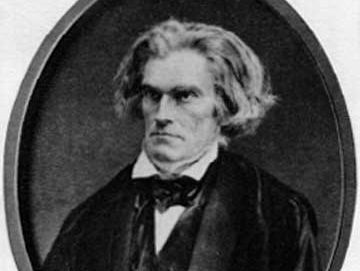
John C. Calhoun [Source: Britannica.com] 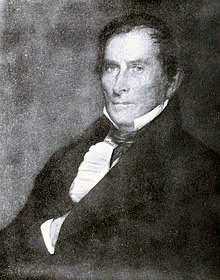
Senator George Poindexter [Source: wikipedia.org]
Although Lawrence is America’s primal predator preying upon presidents, he goes unmentioned in Assassins, as do others who plotted against presidents.
It should be noted, however, that the United States has such a violent history full of internal intrigue that, if every would-be murderer of a head of state were depicted in Assassins, the playwrights would have needed to produce an entire mini-series. EWP’s one-act production runs about 100 minutes or so, without an intermission. That said, the Lawrence/Jackson saga would make for a great Oliver Stone period piece!
JOHN WILKES BOOTH: The Über-Assassin

On April 14, 1865, John Wilkes Booth (Trance Thompson) infamously shot Abraham Lincoln at Ford’s Theatre while he was watching Our American Cousin. (See a slide show derived from the assassination reenactment filmed by D.W. Griffith in his 1915 racist epic The Birth of a Nation, with Booth portrayed by Raoul Walsh, who went on to become a Hollywood director of classics such as 1931’s The Public Enemy, at: https://lincolnconspirators.com/2013/06/15/the-assassination-in-the-birth-of-a-nation/.)
Booth belonged to a Maryland-based theatrical dynasty and is depicted as being an egomaniac, which sets the template for how the other titular characters are portrayed in Assassins. Being a Confederate sympathizer fueled Booth’s delusions of grandeur far beyond that of even a celebrity’s temperament, bestowing upon him the sense that he had a messianic mission to remove Lincoln from Planet Earth.
In EWP’s Assassins production, Booth is shown onstage as having only a single co-conspirator. While they are on the lam and as Union troops besiege the barn they are hiding out in, the blurry-eyed Booth beseeches his collaborator to write entries in a journal in order to immortalize his words and bloody deeds for all time.
The fact is, Booth’s conspiracy was far broader, including at least nine pro-Confederate sympathizers distraught by the South’s defeat in the Civil War.
They allegedly included Mary Surratt, who operated a boardinghouse in Washington where Booth and his co-conspirators (purportedly including her son John Surratt) would meet. Robin Wright portrayed Mary (convicted at a military trial, she became the first woman ever hanged by the Federal government, despite insisting she was innocent) in the 2011 Robert Redford-helmed movie The Conspirator, which did a far better job than Assassins did in presenting the conspirators who liquidated Honest Abe.

Redford’s film also was much better than Assassins in showing the range of the conspiracy, which included plans to murder other high-ranking U.S. officials, Vice President Andrew Johnson (Booth’s associate George Atzerodt did not carry out the plan to whack Johnson) and Secretary of State William H. Seward, who Booth’s co-plotter Lewis Powell stabbed, although he survived.
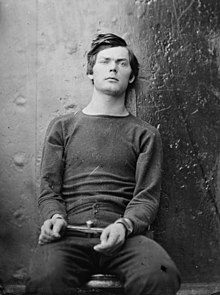
Lewis Powell [Source: wikipedia.org] 
William H. Seward [Source: wikipedia.org]
I don’t recall this wider plot being mentioned in Assassins; if it was, the intrigue to also execute Johnson and Seward was not emphasized.
The importance of the above is that, as mentioned, the depiction of Booth serves to emphasize what later became known as “the lone gunman theory” of a deranged madman seeking to secure everlasting fame by knocking off a president. Mental illness has been a rationale used to explain away presidential assailants. Political rationales and wider conspiracies are minimized or denied.
East West Players is not responsible for Assassins’ dialogue, lyrics, plot, etc., per se, but the theater definitely is responsible for its casting decisions. EWP ballyhoos itself in its digital playbill as “the nation’s first producer of Asian American artistic works and one of the country’s oldest theaters of color.”
As such, many theatergoers are likely to find it to be eyebrow-raising that the only cast member of Assassins’ ensemble who is Black, Trance Thompson, portrays John Wilkes Booth. Some may look askance at the ahistorical casting of an African American as the Great Emancipator’s slayer.
Others may find this to be an inspired bit of nontraditional role playing. To be fair, in terms of his acting and singing prowess, Thompson does indeed excel. But the fact that the sole Black thespian out of a troupe of 16 actors is the one chosen to assassinate the president credited with freeing the enslaved Blacks is perplexing, to say the least. It is interesting to note that Trance Thompson also played the militant Coalhouse Walker in Ragtime and Che Guevara in Evita in previous stage productions.
CHARLES GUITEAU: Mad As a Hatter
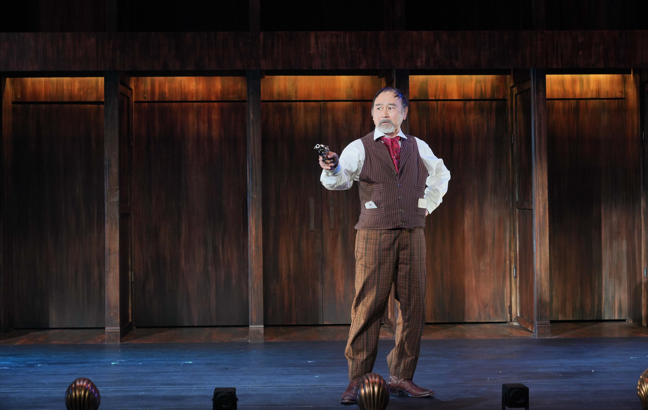
Charles Guiteau (Gedde Watanabe) shot President James Garfield at a Washington, D.C., railroad station on July 2, 1881. Of all of Assassins’ characters, in my opinion Guiteau comes the closest to fitting this mold of the miscreant acting on his own in order to cement his place in history. The giddy Gedde Watanabe humorously plays Guiteau as if he is completely off his rocker.
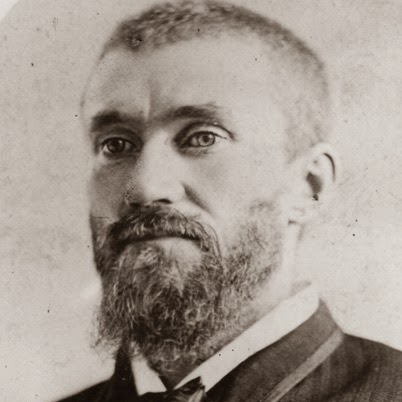
What was Garfield’s “offense” that triggered Guiteau’s shooting of the 20th president with a British Bulldog revolver? Garfield did not grant Guiteau’s (who was of French-Huguenot lineage) absurd application to serve as U.S. ambassador to France.
The looney tunes Guiteau was noted for his bizarre courtroom behavior and for dancing on his way to the noose, shaking his hangman’s hand and reciting a poem he had written for the occasion, I Am Going to the Lordy, which is drolly recounted onstage in the EWP version of Assassins. This was quite literally gallows humor. Although Guiteau was involved with Republican intra-party factional disputes, he seems like an exhibitionistic opportunist who was not guided by any moral or ideological principles.
LEON CZOLGOSZ: Propaganda of the Deed Indeed
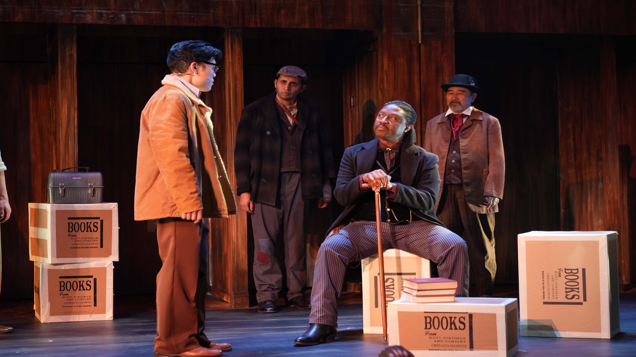
William McKinley’s assassin, Leon Czolgosz is depicted as being driven by left-wing zealotry as Booth was by right-wing fanaticism. The working-class son of immigrant parents, Czolgosz (George Xavier) is presented as a downtrodden proletarian who attends speeches by the rabble-rousing anarchist Emma Goldman (with a twinkle in her eyes Kym Miller plays Red Emma, who J. Edgar Hoover later called “one of the most dangerous women in America”), who allegedly inspired him to shoot President McKinley on September 6, 1901, at the Pan-American Exposition in Buffalo.
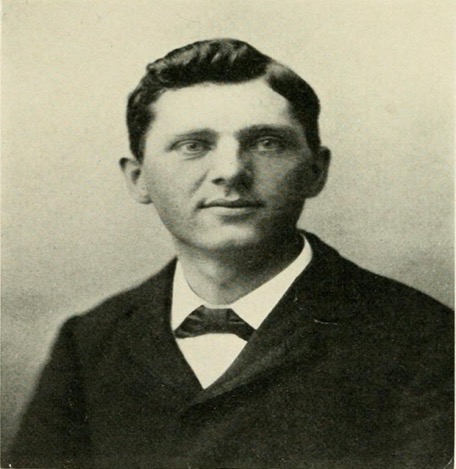
Although Assassins is clear that Czolgosz was an adherent of anarchy who came from a very oppressed background, McKinley’s specific actions that would have motivated the leftist gunman to execute the 25th president go unmentioned. Goldman was detained for two weeks following the shooting of McKinley, but she was eventually cleared of having played any role in Czolgosz’s “propaganda of the deed.”
In fact, McKinley’s presidency arguably marked the transition of America from a republic to an empire. Through the Spanish-American War and other Machiavellian machinations, McKinley expanded America’s reach and role in the world. Once “Manifest Destiny” succeeded in subduing America’s indigenous peoples, genocidally conquering the continent from sea to shining sea, the ever-voracious U.S. capitalist class inevitably turned its greedy eyes overseas.
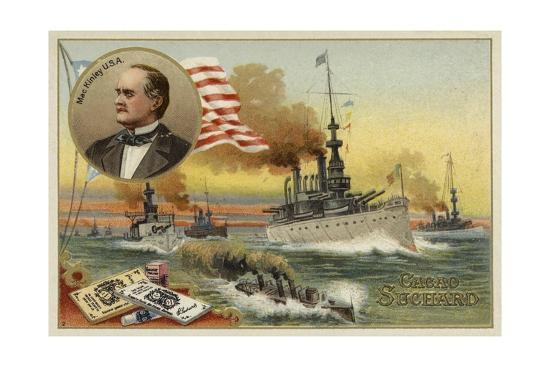
By 1898 Manifest Destiny was unleashed abroad and American expansionism ruthlessly annexed and/or colonized Hawaii, Guam, the Philippines, Puerto Rico, American Samoa, the Virgin Island’s, Cuba’s Guantanamo Bay for a naval base and eventually a gulag and beyond. In an 1898 speech to the Franklin Club in Cleveland, Ohio, the inimitable Red Emma had declared: “The capitalists of this country have no business to involve us in a war with Spain. The common people do not want war… So-called patriotism is nothing more than idiocy or slavery.” (http://mckinleydeath.com/documents/magazines/MC14-3c.htm)

Many Americans were opposed to expansionism. Czolgosz’s last words were: “I killed the President because he was the enemy of the good people—the good working people. I am not sorry for my crime.” It stands to reason that among the crimes Czolgosz the anarchist made McKinley pay for was “having the eagle put its talons on any other land,” as Mark Twain, Vice President of the Anti-Imperialist League, put it.
JOHN FLAMMANG SCHRANK: Another Lone Nut?
Czolgosz’s direct action had a fatal flaw—McKinley’s constitutionally mandated successor, Vice President Teddy Roosevelt, was a veteran Rough Rider and arch-imperialist. He pursued McKinley’s expansionism, gunboat diplomacy, dispatching the “Great White Fleet” of warships that circumnavigated the globe while striving to “speak softly but carry a big stick.” Revolutions are not accomplished by eliminating individuals, but by overthrowing systems.
When Roosevelt tried to regain the White House by running on the Bull Moose Party ticket, he was shot October 14, 1912, in Milwaukee by saloonkeeper John Flammang Schrank in a near fatal assassination attempt also neglected by Sondheim et al in Assassins.
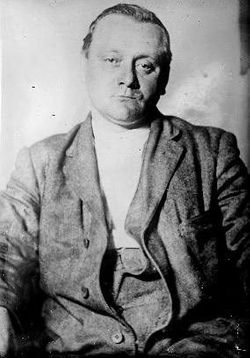
The bullet was prevented from reaching Roosevelt’s heart because it struck a copy of his hefty campaign speech and eyeglasses case in Teddy’s breast pocket, and lodged in his chest muscle. The Bavarian-born Schrank was diagnosed as a crank. Reportedly claiming McKinley came to him in a dream and told him to kill his veep in order to avenge his death, Schrank was declared to be insane and lived the rest of his life in a hospital for the criminally insane, where he died in 1943.
GIUSEPPE ZANGARA: Malcontent, Activist or Mob Hitman?

The first wannabe presidential slayer who failed to execute the chief executive depicted in the play is the little-remembered Giuseppe Zangara (Aric Martin). This Italian immigrant tried to shoot President-elect Franklin Delano Roosevelt in Miami a couple of weeks before his 1933 inauguration, missing FDR but succeeding in shooting five others, including a bodyguard and Chicago Mayor Anton Cermak, who subsequently died.

As depicted in Assassins Zangara suffered from great physical pain, and the musical attributes his ailments as the reason why he tried to shoot the man who would become president in only 17 days.
After the judge sentenced Zangara to the electric chair, he declared: “I no afraid of that chair! You one of capitalists. You is crook man too. Put me in electric chair. I no care!” But these statements were neglected in Assassins, as was Zangara’s proclamation: “I have the gun in my hand. I kill kings and presidents first and next all capitalists.” Around 1999, an unproven conspiracy theory emerged that Zangara was actually a hired gunman enmeshed in organized crime warfare and that his actual intended victim was Chicago’s mayor, not FDR. But this too was ignored in Assassins.
NATIONALISTS: Jewish and Puerto Rican
In mid-1947, the ultra-Zionist Stern Gang reportedly mailed letter bombs to President Harry Truman that were intercepted in the White House mailroom.
But a more serious attempt to take Truman’s life took place three years later. A half-century after McKinley’s land grabs, a second president was under attack because of American expansionism in another assassination attempt overlooked by Sondheim and company. While Truman was residing at Blair House due to White House renovations, on November 1, 1950, Oscar Collazo and Griselio Torresola attempted to shoot Truman, who was unharmed.
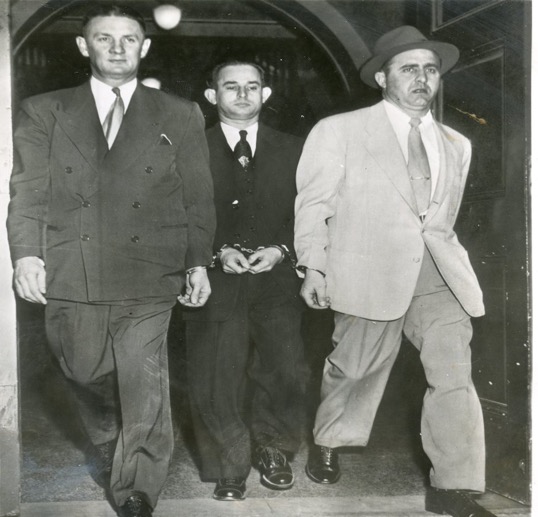
During the brief but deadly gunfight, the Puerto Rican nationalists shot several officers guarding the president, including members of the Secret Service, plus Capitol and White House Police, killing one. Torresola was instantly shot dead. Collazo was sentenced to death, which Truman commuted to a life sentence.
In 1979, President Jimmy Carter commuted this sentence to time served and the Nationalist Party member returned to Puerto Rico. What a pity Sondheim, et al did not dramatize onstage in Assassins what author Ronald Kessler called “the biggest gunfight in Secret Service history.”
SAMUEL J. BYCK: Flight of Fancy
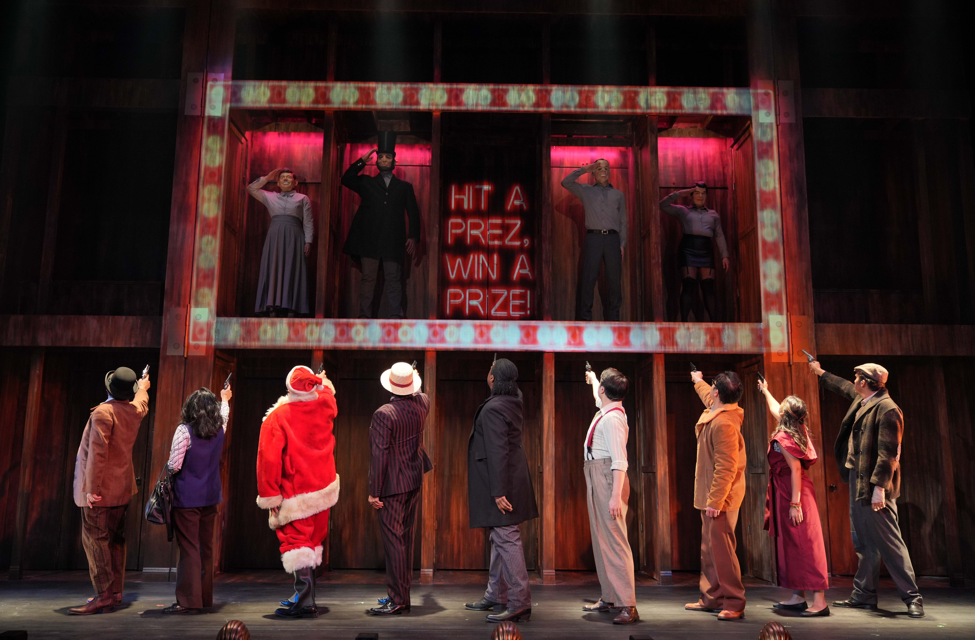
The only charter member of this motley crew of presidential assassins or wannabe assassins whose weapon of choice was not a firearm (aside from the Stern Gang terrorists’ would-be mail bombers) in our nation awash in guns is Samuel J. Byck (the wry Christopher Chen). His February 22, 1974, attempt to hijack a jet in order to make it crash into the White House to kill President Richard M. Nixon was foiled, but arguably anticipated the 9/11 aerial attacks.
The whimsical if homicidal Santa Claus suit-clad Byck who records tapes to be sent to celebrities such as Leonard Bernstein (who composed West Side Story’s music, for which Sondheim wrote the lyrics) provides much of the comic relief for Assassins, which is, to some extent, a dark comedy.
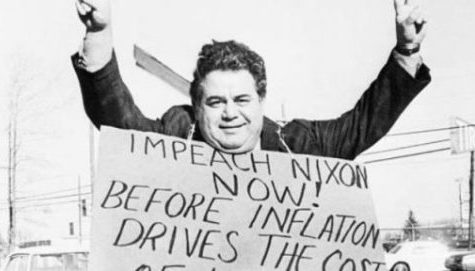
Byck is presented as another misfit in this play’s procession of malcontents who seek to take out their inner angst on the leader of the “Free World.” The Vietnam War and Nixon’s entanglement in that debacle are never mentioned in the musical, although it is in the 2004 movie The Assassination of Richard Nixon, starring Sean Penn as failed furniture salesman Samuel J. Bicke (the film spells his name differently). In this drama, Nixon is praised for his salesmanship in selling the public on his disastrous Indochina policies.
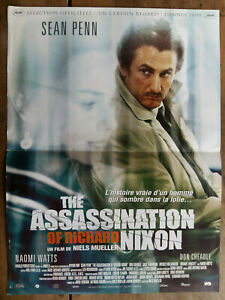
LYNETTE “SQUEAKY” FROMME/SARA JANE MOORE: Charlie Manson’s Girl and The Gal Who Couldn’t Shoot Straight

It is extremely ironic that, while Assassins downplays the extent of the pro-Confederate cabal Booth connived with, and denies any conspiracy regarding the elimination of JFK, the musical conjures up a conspiracy between the two women who menaced President Gerald Ford 17 days apart in California in 1975.
The impression I got watching Assassins is that Lynette “Squeaky” Fromme (the chillingly menacing Astoncia Bhagat Lyman) and Sara Jane Moore (the humorous Joan Almedilla) were in on it together. They appeared to me to be conspiring together, even (if drolly) doing target practice with one another, and then attempting to jointly shoot the man who pardoned Tricky Dick. But this fanciful depiction is completely contrary to the facts.
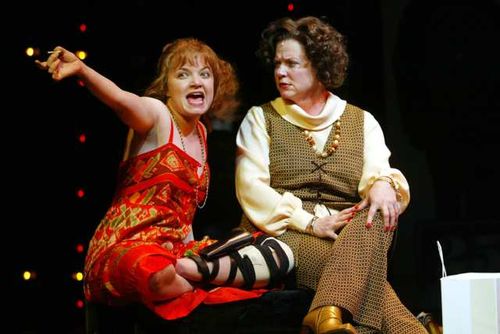
On September 5, 1975, Squeaky Fromme, a Manson cult follower, pointed a Colt .45 at President Gerald Ford in Sacramento. It appears that Squeaky pulled the trigger but, as she herself shrieked, “It wouldn’t go off,” probably because there was no bullet in the pistol’s chamber.
Just 17 days later, on September 22, 1975, Sara Jane Moore fired shots at Ford in San Francisco. After police had confiscated Moore’s own handgun the day before, she used a .38 caliber revolver she had quickly purchased that morning to kill Ford, and did not realize the .38’s sights were aligned differently than her .44 caliber pistol’s had been. Her first shot missed the president and a quick-witted ex-Marine foiled her second shot, which ricocheted—missing Ford but wounding a cab driver.
Not only were Squeaky and Moore’s attempted assassinations completely separate acts but it appears that the two women had never even met—let alone conspired—to shoot the commander-in-chief. I cannot say why Sondheim, etc., took such artistic liberties, but their flight of fancy seems to be totally at odds with any semblance of historical accuracy.
JOHN HINCKLEY, JR.: Obsessed Fan or Plot Pawn?
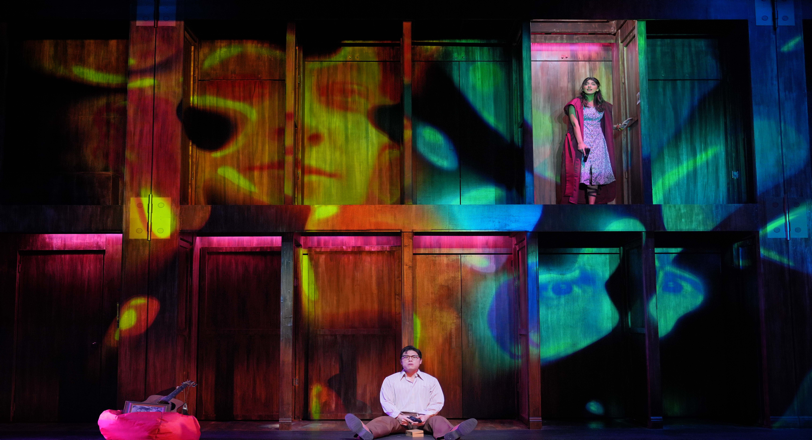
The next would-be assassin is believed to have been closer to the mark, hitting but not killing President Ronald Reagan in Washington. Not long after Reagan was inaugurated, shots were fired by John Hinckley, Jr. (Arvin Lee) at Reagan’s entourage as they walked toward vehicles from the Washington Hilton on March 30, 1981. White House Press Secretary James Brady was shot in the head. The second shot hit policeman Thomas Delahanty.
A member of the crowd wrestled with the gunman, who managed to keep firing. The fourth round hit Secret Service Agent Tim McCarthy, who was trying to protect the president as he was being rushed to his limousine. The sixth and last bullet ricocheted off of the limo and reportedly struck Reagan, who recalled:
“John Hinckley, Jr.’s bullet probably caught me in midair at the same moment I was being thrown into the back of the car by [Secret Service Agent] Jerry Parr… First the bullet had struck the limousine, then it had ricocheted through the small gap between the body of the car and the door hinges. It hit me under my left arm, where it made a small slit like a knife wound.”
In Assassins, the youthful Hinckley’s main motivation is attributed to his desire to impress actress Jodie Foster and to win her love. The lovelorn Hinckley was in real life found not guilty by reason of insanity and spent years receiving institutional psychiatric care. He was released, with many conditions, in 2016.
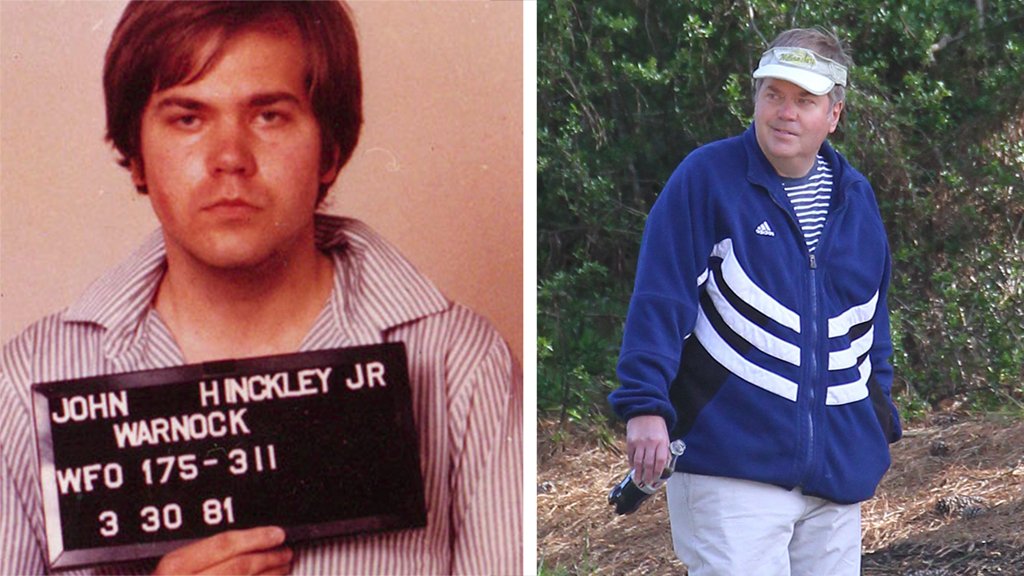
According to Reagan’s account, when the wounded 70-year-old was in the hospital he joked around, telling his wife Nancy, “I forgot to duck” and quipping to a doctor: “I hope you’re a Republican.”
Before the shooting incident, Reagan’s unpopular Reaganomics program to cut back essential services and the welfare state was facing stiff opposition in the House of Representatives, where Democrats formed a 50-plus seat majority. After the supposed assassination attempt, Reagan rode a wave of sympathy and his deregulation—“trickle-down-economics”—plan was passed.
As History.com put it: “Reagan’s popularity soared after the assassination attempt, and at the end of April he was given a hero’s welcome by Congress. In August, this same Congress passed his controversial economic program, with 46 Democrats breaking ranks to back Reagan’s plan.”
Sondheim’s eerie musical never comments on, let alone explores, a strange coincidence: The reportedly long-time connection between the families of George H.W. Bush and the Hinckleys, “going back to the days when both families set down stakes in the dusty town of Midland, Texas, a magnet for the children of wealthy, East Coast families seeking to cash in on the oil boom.”

And get a load of this: According to the April 1, 1981, New York Times, “The eldest Hinckley child, [John’s brother] Scott, 30, is the vice president of the his [sic] father’s company and a friend of Neil Bush, the son of Vice President Bush. Scott Hinckley and a date had been invited to dinner at the young Bush’s home last night, but the dinner was canceled after the shooting.”
What do you think are the odds of this connection in a country of 230 million people?
Bush, of course, was Reagan’s veep, and the latter’s death would have constitutionally elevated Bush to the presidency. In addition, Bush was a former CIA director, and the Texan’s ties to the nefarious agency purportedly stretched back to the JFK days, according to author Joseph McBride.
The March 30, 1981, shooting incident outside the Washington Hilton was videotaped, which I’ve repeatedly observed with educated eyes as someone who had majored in cinema. When I attended film school at the City University of New York in the 1970s, it was scientifically proven at a Steenbeck editing table that I was able to see images that were between 1/4th and 1/6th of a second in duration. Now, if you look closely at various versions of the gunfire, you will indeed see individuals who appear to have been shot, including Brady. However, at no time in the moving and still images will you ever see Ronald Reagan being shot per se.
To be sure, you will certainly see moving pictures and photos and hear sound that strongly suggest that Reagan was shot, but not imagery of a bullet actually striking the former Hollywood actor, who is very quickly whisked away from the scene of the crime behind closed limousine doors—and away from prying eyes.
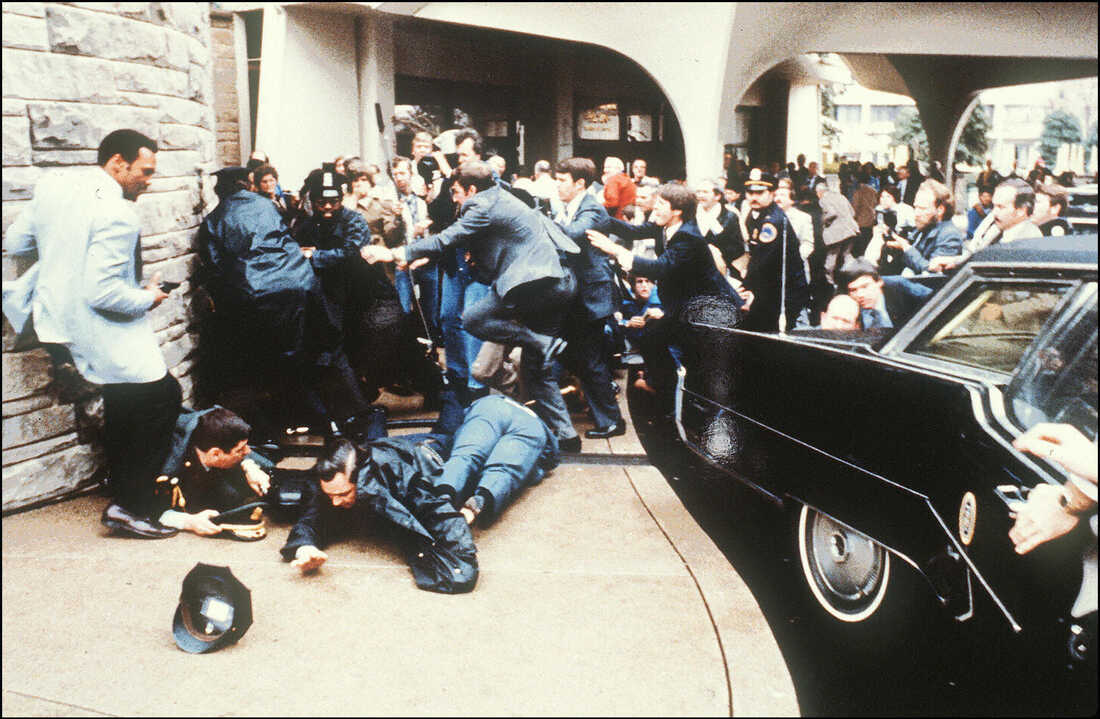
But, hey, don’t take my word for it. Here are three different links of versions that repurpose footage, photos and sound of the shooting incident and watch them very closely. Play scenes in slow motion, etc. Do you ever definitively see the ex-cowboy star get shot, Reagan actually getting struck by a bullet?
I am not saying Reagan was not shot. Maybe he was—I was not there. (I was in Hawaii where it was reported that school children cheered when they heard the news, as others did. See: https://www.upi.com/Archives/1981/04/01/Students-who-cheered-the-news-that-President-Reagan-had/3144354949200/.) What I am saying is that you never see images that definitively prove the president was shot.
Does it sound suspicious to you that a 70-year-old with a bullet supposedly lodged near his lung is joking in the hospital? Was the shooting incident staged in order to generate sympathy for a stricken president so he could get his stalled economic policies passed?
Did Bush the former spymaster pull strings to manipulate a young man known by his family to be troubled to act, unbeknownst to him, as part of a larger conspiracy to choreograph public opinion in the early days of the Reagan presidency, when the administration faced an uphill battle to pass its priorities with a Democratic majority in the House? Or did Bush try to eliminate Reagan so he could become president?
Would a regime that ignored the AIDS crisis and committed mass murder in Central America with Death Squads and a Contra War funded partially by crack cocaine sales to Americans and illegal arm sales to Iran in exchange for hostages, use a trained Tinseltown thespian to fake an assassination attempt—even if it meant shooting its own press secretary in the head?
In Assassins, the demented, smitten Hinckley is driven by erotomania, his sexual fixation on Jodie Foster and his ardent desire to win her admiration and amour. You will not find any of the above theories raised by Sondheim and Weidman. This is because it does not fit Assassins’ narrative of the deranged lone gunman/woman seeking to solve his/her psychological complexes and find fame by blowing away the ultimate authority figure.
- East West Players presents Assassins on Thursdays through Saturdays at 8:00 p.m., with 2:00 p.m. matinees on Saturdays and 5:00 p.m. performances on Sundays through March 20 at the David Henry Hwang Theater, 120 Judge John Aiso Street, Los Angeles, CA 90012. For info and tickets: (323)609-7006; https://eastwestplayers.org/. Covid documents are checked but there was no social distancing at the sold-out premiere.

CovertAction Magazine is made possible by subscriptions, orders and donations from readers like you.
Blow the Whistle on U.S. Imperialism
Click the whistle and donate
When you donate to CovertAction Magazine, you are supporting investigative journalism. Your contributions go directly to supporting the development, production, editing, and dissemination of the Magazine.
CovertAction Magazine does not receive corporate or government sponsorship. Yet, we hold a steadfast commitment to providing compensation for writers, editorial and technical support. Your support helps facilitate this compensation as well as increase the caliber of this work.
Please make a donation by clicking on the donate logo above and enter the amount and your credit or debit card information.
CovertAction Institute, Inc. (CAI) is a 501(c)(3) non-profit organization and your gift is tax-deductible for federal income purposes. CAI’s tax-exempt ID number is 87-2461683.
We sincerely thank you for your support.
Disclaimer: The contents of this article are the sole responsibility of the author(s). CovertAction Institute, Inc. (CAI), including its Board of Directors (BD), Editorial Board (EB), Advisory Board (AB), staff, volunteers and its projects (including CovertAction Magazine) are not responsible for any inaccurate or incorrect statement in this article. This article also does not necessarily represent the views the BD, the EB, the AB, staff, volunteers, or any members of its projects.
Differing viewpoints: CAM publishes articles with differing viewpoints in an effort to nurture vibrant debate and thoughtful critical analysis. Feel free to comment on the articles in the comment section and/or send your letters to the Editors, which we will publish in the Letters column.
Copyrighted Material: This web site may contain copyrighted material the use of which has not always been specifically authorized by the copyright owner. As a not-for-profit charitable organization incorporated in the State of New York, we are making such material available in an effort to advance the understanding of humanity’s problems and hopefully to help find solutions for those problems. We believe this constitutes a ‘fair use’ of any such copyrighted material as provided for in section 107 of the US Copyright Law. You can read more about ‘fair use’ and US Copyright Law at the Legal Information Institute of Cornell Law School.
Republishing: CovertAction Magazine (CAM) grants permission to cross-post CAM articles on not-for-profit community internet sites as long as the source is acknowledged together with a hyperlink to the original CovertAction Magazine article. Also, kindly let us know at info@CovertActionMagazine.com. For publication of CAM articles in print or other forms including commercial internet sites, contact: info@CovertActionMagazine.com.
By using this site, you agree to these terms above.
About the Author
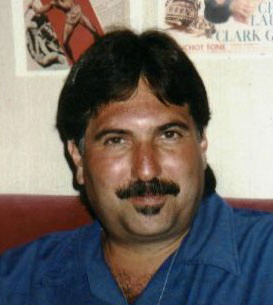
Ed Rampell is an L.A.-based film historian and critic who also reviews culture, foreign affairs and current events.
Ed can be reached at edrampel@gte.net.


[…] Oliver Stone Criticizes Sondheim for Promoting Lone JFK Assassin Theory in Broadway Musical “Assas… […]
This article is an amazing coincidence for me. One minute before I noticed this article in Covert Action Magazine I was reading a comment that someone said about Oliver Stone. A journalist who once wrote an article in Covert Action Magazine made the following comment about Oliver Stone. He wrote ” Has Oliver Stone ever met a dictator that he didn’t admire? ” It was quite a coincidence that I read this comment one minute before I noticed today’s article in Covert Action Magazine.